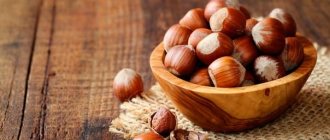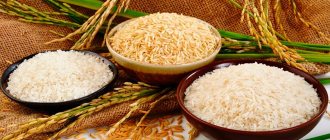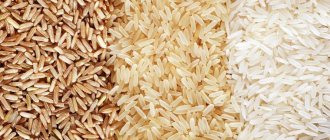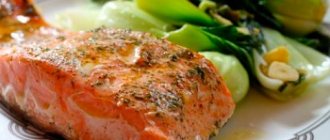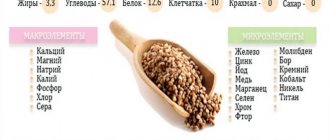When you start studying information on effective methods of losing weight, you always come across advice to enrich your diet with fruits. In particular, they are recommended to replace desserts. Moreover, if you do not study the issue thoroughly, you can make a grave mistake by starting to eat everything indiscriminately and in huge quantities. The result of such eating behavior can be even greater weight gain, because the calorie content of fruits in some cases really goes off scale. It increases even more if you consume them in cooked form. After all, the energy value and glycemic index vary greatly depending on how the dishes are prepared. It is also important to follow a special regime for eating such desserts, even if we are talking about low-calorie fruits that promote weight loss.
By spending just ten minutes studying the important information and then another hour creating a new diet, you can easily control the calories entering your body from these healthy gifts of nature. Moreover, you don’t need to think that in order to lose weight, you will need to limit yourself to a rigid list of fruits that you will certainly have to eat raw. There are a huge number of dishes and drinks that will also not harm your figure if you do not abuse them.
Health Benefits of Fruits
To maintain a healthy and beautiful body, it is advised to eat a lot of vegetables and fruits. The distinctive factor of sweet fruits is that they improve health, prevent diseases, and have a positive effect on a person’s emotional state.
Vitamin C and A, fiber, minerals - this is not the entire list of benefits found in fruits that prevent various types of diseases and aging.
The calorie content of fruits (the energy value table will be presented later in the table) is not the only parameter by which they can be divided.
According to acid level, fruits are divided into:
- neutral in taste (avocado, coconut);
- semi-acidic in nature (mango, tangerine);
- sour in taste (grapes, pineapple, grapefruit);
- sweet (apple, pear, banana).
The neutral type does not have a specific taste, but has useful elements, vitamins, protein, and minerals.
The most saturated with microelements are sour fruits. They reduce cholesterol, break down fats, and remove uric acid.
Fruits with a semi-sour aftertaste are characterized by a mild taste due to their low acid content and are rich in proteins.
Sweet fruits boast a lack of acid, but they also contain B vitamins, as well as A, E, C.
It is good to eat all fruits, it is important to be able to combine sour and sweet fruits, otherwise there is a risk of stomach upset, especially with high acidity or diabetes. Sweet and sour fruits are ideally combined, and sour fruits are recommended to be consumed separately, given their contraindication for people with stomach ulcers and gastritis.
Variety of nutrients in fruits
Fruits have little energy value and a lot of water, so it is advisable to consume them at least 5 times a day. The presence of elements such as potassium and calcium allows us to classify fruits as alkaline foods. Lemon sourness is caused by the presence of organic acids, but they do not form acid. Jam and confiture are usually made from fresh fruit, but, unfortunately, during their preparation most of the fruit vitamins are lost. However, the energy value of such products remains high due to the large amount of sugar. Industrially produced confitures contain preservatives.
Classification of fruits, which ones are healthier?
When eating fruits, every exotic lover is interested in which ones are beneficial. For example, the highest concentration of vitamins was found in grapes and apples.
Fruits are classified and divided into types:
- Subtropical. The group containing folic acid, potassium element and vitamin C includes:
- all citrus fruits;
- pomegranate;
- persimmon;
- fig.
- Tropical. In this group:
- a pineapple;
- kiwi;
- banana;
- other exotic manganese-containing fruits.
- Pomaceae. This category includes:
- pears;
- apples;
- rowan;
- other fruits containing potassium and fiber.
- The class with a bone is represented by:
- apricots;
- plums;
- cherries;
- peaches.
- fruits containing potassium, beta-carotene, vitamin C.
- Berry class. The group includes those chock full of antioxidants:
- strawberry;
- raspberries;
- blueberry;
- blackberry;
- grape.
- The melon class, for example, iron and sodium-containing watermelon and melon, they are also enriched with vitamins PP, C and A.
The most useful are:
- apples;
- blueberry;
- cranberry;
- grape;
- grapefruit.
The calorie content of fruits (apples are in first place in the health chart) is lower than that of other products. 100 g of apple pulp contains only 52 kcal. The fruits are full of flavonoids and antioxidants, which reduces the possible development of asthma and diabetes.
Cardiologists advise eating 1 apple a day, which reduces the content of unwanted lipid substances and also activates digestion thanks to pectin and polyphenol. Apple fruit acids are a common ingredient in peeling products.
Blueberries are the most active berry in terms of antioxidants, containing only 24 kcal. Its anthocyanins develop memory, reduce the incidence of Parkinson's and Alzheimer's diseases, as well as the risk of glaucoma and cataracts thanks to glycosides. The fact that blueberries improve vision has not been proven. Antioxidants from berries are often included in the list of ingredients in creams with anti-aging effects.
Cranberries, having 46 kcal, have properties that can kill bacteria and are used in therapeutic methods against viruses and influenza. Cranberry juice with proanthocyanidins fights oral problems, including caries. The pulp of the berries has a refreshing effect and is used as an ingredient in face creams.
Grapes are the center of polyphenol accumulation. 100 g contains 67 kcal. Resveratol prevents the formation of malignant clots, fights inflammation, lowers blood pressure, and stops the development of cancer. In the cosmetology industry, grape seed oil is used in the fight against skin aging.
Grapefruit has a low calorie content, only 35, but:
- its antioxidant naringenin fights the onset of type 2 diabetes;
- nutrients improve intestinal function;
- lycopene and flavonoids prevent the development of cancer;
- pectin reduces cholesterol levels.
Citrus juice removes toxins, improves digestion, but in no way affects the body’s ridding of excess calories. Grapefruit-based essential oil relieves fatigue, and creams are aimed at combating cellulite and lightening skin pigmentation.
Low calorie fruits
Below is a table of caloric content of fruits and berries, which have little nutritional value.
They can be included in various diets for weight loss. Many fruits enhance metabolism and promote active burning of fat deposits.
| Type of fruit | Calorie content (kcal) per 100 grams | Description |
| Lemon | 30-35 | This citrus fruit is based on a high content of vitamin C. It is useful to consume it in the autumn and spring, when there is an exacerbation of acute respiratory infections and acute respiratory viral infections. However, people who have stomach and intestinal problems are advised to consume these fruits in limited quantities. |
| Grapefruit | 35-38 | Promotes increased burning of fat deposits, suppresses appetite, and removes fluid from the body. Due to the fact that it contains the necessary set of nutrients, including fiber, citrus has a positive effect on the activity of the gastrointestinal tract and liver. Increases immunity, strengthens vascular walls, suppresses depression, improves emotional state |
| Apricot | 40-43 | The fruit contains high levels of magnesium and phosphorus. These substances activate the brain and strengthen memory. And beta-carotene improves vision, reduces the risk of cancer, maintains heart and vascular health |
| Plum | 42-44 | The main components are B vitamins and vitamin K. The composition also contains potassium, calcium, iron, phosphorus, magnesium, and natural acids. Improves stool, solves problems of the genitourinary system. When consuming plums, the body is cleansed and metabolism returns to normal, so it must be included in the menu when losing weight. |
| Pear | 43-47 | The pulp contains vitamins B1, C, P, fructose, and other natural sugars. The seeds contain a high level of iodine |
| Kiwi | 47-49 | The fruit contains a high level of macro- and microelements, vitamins, and fiber. Dietary fiber fills the stomach, eliminates hunger for a long time and improves the functioning of the digestive system. |
| Apples | 48-50 | Fruits have high levels of iron, phosphorus, vitamin C, and pectin. It is pectin that cleanses the body and blood of waste and toxins. |
| A pineapple | 48-51 | This is a unique exotic fruit that is rich in bromelain. This substance is a powerful fat burner |
Fruits and weight loss: compatible or not?
People with a great desire to lose weight adhere to certain diets and avoid fruits due to their sucrose content. This is a partial misconception, because fruits, if included correctly in the diet, help to lose weight in a tasty and healthy way.
The most important tip for those losing weight: it is better to eat fruits separately from other types of food.
This rule was developed as a result of comparing the time it takes to digest the foods consumed. Fruits need less time to be absorbed in the body, and therefore it is recommended to eat half an hour before or 2 hours after the main meal.
Separate nutrition is the key to success in the fight against excess weight. Carbohydrates that come with fruits are digested quite quickly, and if you add fat and protein to the diet, the body will make an effort to digest them first, and carbohydrates, meanwhile, will be deposited in problem areas.
What determines the calorie content of fresh fruits?
The caloric value varies depending on the presence of dextrose, sucrose and glucose in the fruit, which is often noted in special tables. Dried fruits contain the most calories - they have the least amount of moisture, and accordingly, those with the highest degree of water content have the lowest calorie content.
This rule applies when considering fresh, frozen or dry fruits. For those who closely monitor their weight, naturally sweet bananas and grapes are contraindicated; they are also advised to avoid dried fruits.
For example, 100 g of already dried apple contains 231 kcal - this is 6 times more than the energy value of a fresh apple. In the case of canned fruits, the situation is similar; they are subjected to heat treatment, as a result of which some of the nutrients are removed, and additional calories are added due to sweet syrups.
In order not to deny yourself fiber-rich fruits, you should eat them in the morning. Thus, the body is charged with energy, and carbohydrates are quickly broken down, without having time to be deposited in unnecessary places. In the evening, the human body prepares for sleep, and will want to leave work on calories consumed for later.
Nutritional value of dried fruits
Dried fruits can be seen on the table all year round, unlike fresh ones. They are characterized by high calorie content, which is convenient for a quick and nutritious snack.
100 g of product contains:
- 0 g fat;
- 2.8 g protein;
- 53.1 g carbohydrates;
- 216.3 kcal.
Both fruits and berries are now dried, so you can find dried fruits in stores and markets:
- apples;
- pears;
- apricots;
- figs;
- bananas and much more.
The benefits of the composition of these fruits are proven by the minerals they contain in the form of calcium, phosphorus, and iron. During dehydration, vitamin C is partially lost. Eating dried fruits makes bones strong, nerves resistant, nail plates and hair follicles beautiful and healthy thanks to calcium.
It is not recommended to eat dried fruits in large quantities for diabetics and those who want to lose weight, people with exacerbation of ulcers of the duodenum, stomach and intestines.
| Name | in 100 g | |
| kcal | Used | |
| Dried grapes | 271 | 1,7/-/65 |
| Fig/fig fruit | 257 | 3,1/0,7/57,7 |
| Dried plum | 241 | 2,2/-/58,3 |
| Dried apricot | 240 | 5,3/-/54 |
| Dried date palm fruits | 305 | 2/0,5/72,3 |
Dairy
| Product | Calorie content | Squirrels | Fats | Carbohydrates |
| Cow's milk cheese | 260 | 17,9 | 20,1 | 0 |
| Yogurt nat. 1.5% fat | 51 | 5 | 1,5 | 3,5 |
| Low-fat kefir | 30 | 3 | 0,1 | 3,8 |
| Full fat kefir | 59 | 2,8 | 3,2 | 4,1 |
| Milk | 58 | 2,8 | 3,2 | 4,7 |
| Acidophilus milk | 83 | 2,8 | 3,2 | 10,8 |
| Whole milk powder | 475 | 25,6 | 25 | 39,4 |
| Condensed milk | 135 | 7 | 7,9 | 9,5 |
| Condensed milk with sugar | 315 | 7,2 | 8,5 | 56 |
| Curdled milk | 58 | 2,8 | 3,2 | 4,1 |
| Ryazhenka | 85 | 3 | 6 | 4,1 |
| Cream 10% | 118 | 3 | 10 | 4 |
| Cream 20% | 205 | 2,8 | 20 | 3,6 |
| Sour cream 10% | 116 | 3 | 10 | 2,9 |
| Sour cream 20% | 206 | 2,8 | 20 | 3,2 |
| Special cheeses and curd mass | 340 | 7,1 | 23 | 27,5 |
| Russian cheese | 371 | 23,4 | 30 | 0 |
| Dutch cheese | 361 | 26,8 | 27,3 | 0 |
| Swiss cheese | 396 | 24,9 | 31,8 | 0 |
| Poshekhonsky cheese | 334 | 26 | 26,5 | 0 |
| Processed cheese | 226 | 24 | 13,5 | 0 |
| Fat cottage cheese | 226 | 14 | 18 | 1,3 |
| Cottage cheese semi-fat | 156 | 16,7 | 9 | 1,3 |
| Low-fat cottage cheese | 86 | 18 | 0,6 | 1,5 |
Nutritional value of canned fruits
After heat treatment, fruits do not retain the full complement of nutrients originally found in their fresh form. Their calorie content reaches 70 kcal per 100 g of pulp. Carbohydrates do not exceed 16 g, which corresponds to 64 kcal, and fats and proteins amount to only 1 g.
There are several methods for processing fruits, namely:
- pickling;
- chanting;
- pickling;
- salting;
- drying;
- drying;
- gelation;
- making jam;
- syrups;
- jam.
The correctly chosen method of canning makes it possible to enjoy delicious fruits throughout the year.
Calorie table, BZHU frozen fruits
Processing berries and fruits using cold air and ice is an alternative to heat treatment, which occurs due to high temperature. When frozen, the original appearance is preserved, the taste practically does not change, and the beneficial compounds present in fresh form remain.
Using the freezer at home, it is easy to make your own supply of summer freshness and vitamins for the cold winter. When quickly frozen, the fruit remains with a small energy indicator, almost the same as it was in its original form.
Calorie content of fruits, table of BZHU in frozen fruits:
| Index | Grams | Kcal |
| B | 1,1 | 4,11 |
| AND | 0,22 | 2,1 |
| U | 7,4 | 29,2 |
Freezing Instructions:
- Carefully sort and wash the fruits, with the exception of raspberries and strawberries.
- Place in special freezing bags or boxes that will preserve the original appearance of the product.
- In the freezer, place in a separate cell where the fruits will not come into contact with fish or chicken, otherwise they will absorb characteristic odors.
You can leave a piece of summer frozen in every fruit, with the exception of grapes, red and white currants. It is recommended to store fruits in the freezer for no more than 12 months.
Calorie table for dried fruits
If you have a sweet tooth and want to lose weight without giving up sugar-containing products, there is an excellent and healthy alternative to unhealthy confectionery products - candied fruits and dried fruits.
They are very sweet and can satisfy your hunger well. Now let's talk about the calorie content of dried fruits; this is very important information that you should familiarize yourself with so as not to gain extra pounds.
| Name | Calories | Squirrels | Fats | Carbohydrates |
| Dried dates | 271.0 | 2.5 | 0.0 | 68.5 |
| Dried bananas | 245.0 | 4.5 | 0.6 | 54.0 |
| Raisin | 262.0 | 1.8 | 0.0 | 66.0 |
| Dried apricots | 234.0 | 5.2 | 0.0 | 55.0 |
| Prunes | 242.0 | 2.3 | 0.0 | 58.4 |
| Dried rose hips | 110.0 | 3.4 | 0.0 | 21.5 |
| Dried apples | 238.0 | 2.1 | 2.1 | 62.3 |
| Figs | 290.0 | 3.6 | 1.2 | 78.0 |
| Dried cherries | 273.0 | 0.0 | 0.0 | 73.0 |
| Dried strawberries | 273.0 | 0.0 | 0.0 | 73.0 |
Composition, calorie content, BJU content in fresh fruits: table
In order to correctly select natural products for a balanced diet, you need to have information about their BJU indicators, glycemic coefficient and energy value. It is better to eat unprocessed fruits outside of the next lunch, therefore, if you are planning a quick snack, afternoon snack or a full dinner, the table will give a hint in your choice.
| Fruit | B | AND | U | Kcal |
| Watermelon | 0,7 | 0,2 | 8,8 | 25 |
| cranberries | 0,5 | 0,01 | 3,8 | 26 |
| Cherry plum | 0,2 | — | 6,4 | 27 |
| The citrus mix includes the lowest calorie lemon (30 kcal), as well as grapefruit (35 kcal). | ||||
| Country mix | ||||
| Blackberries | 2,2 | — | 4,4 | 31 |
| Strawberry | 0,8 | 0,3 | 6,3 | 32 |
| Blueberries | 1 | 0,1 | 7,7 | 34 |
| Strawberry | 0,8 | 0,5 | 6,2 | 34 |
| Red currant berries | 1 | 0,2 | 7,3 | 35 |
| Black currant berries | 1 | 0,2 | 7,33 | 38 |
| Average nutritional value, g | ||||
| Melon, tangerine and orange have the same nutritional value - 38 kcal, the difference is in proteins, citrus fruits have more of it, but the presence of carbohydrates in melon exceeds that of winter fruits. | ||||
| Raspberries | 0,8 | 0,2 | 8,2 | 39 |
| Apricot | 0,9 | 0,1 | 9,1 | 40 |
| Gooseberry | 0,6 | 0,2 | 9,2 | 41 |
| Blueberry | 1,1 | 0,6 | 8,4 | 41 |
| Fruits of the pear tree | 0,4 | 0,3 | 9,4 | 42 |
| Peach | 0,9 | 0,1 | 9,4 | 42 |
| Plum | 0,8 | 0,2 | 9,7 | 43 |
| Cowberry | 0,7 | 0,5 | 8 | 43 |
| Apple fruits | 0,4 | 0,4 | 9,8 | 44 |
| Nectarine | 0,9 | 0,2 | 11,7 | 48 |
| Kiwi | 0,5 | 0,3 | 11,5 | 49 |
| Cherry berries | 0,8 | 0,5 | 10,4 | 49 |
| A pineapple | 0,5 | 0,2 | 11,6 | 49 |
| “heavy” for the stomach, g | ||||
| Cherries | 1,2 | 0,4 | 10,7 | 50 |
| Sea buckthorn berries | 0,9 | 2,5 | 5,1 | 52 |
Taking a closer look at fruits that are “heavy” for the stomach, it is worth noting that the glycemic index differs with the number of kcal. Cherries have 50 kcal, sea buckthorn berries and pomegranate seeds - 52 kcal, persimmons are 2 points more, and mangoes - 65 kcal.
The most nutritious are grapes and banana:
| Parameter | Grape | Banana |
| Kcal | 70 | 90 |
| B | 0,7 | 1,6 |
| AND | 0,3 | 0,2 |
| U | 17 | 20 |
| Glycemic coefficient | 40 | 60 |
Experts recommend that the weaker sex eat 3 servings of fruit per day. In winter, summer fruits can easily be replaced with a frozen counterpart, because quick freezing preserves a high percentage of nutrients.
Eggs
| Product | Calorie content | Squirrels | Fats | Carbohydrates |
| Chicken egg | 157 | 12,7 | 11,5 | 0,7 |
| Egg powder | 542 | 45 | 37,3 | 7,1 |
| Protein powder | 336 | 73,3 | 1,8 | 7 |
| Dry yolk | 623 | 34,2 | 52,2 | 4,4 |
| Quail egg | 168 | 11,9 | 13,1 | 0,6 |
Calorie content of fruit and dried fruit compotes
Compote is an excellent replacement for juices purchased in stores, the advantage of which is that it is easy to prepare at home. The sweet drink was first prepared in distant France for Louis 4 himself.
Previously, compote was more of a jam-like consistency from fruits ground with sugar. The modern representation of this drink has Russian roots, its other true name is “uzvar”, and it was prepared only on holidays and served, most often, in the houses of nobles and rich peasants.
Compote is prepared from dried, freshly picked and frozen fruits, drunk cold in summer and warm in winter. Unfortunately, men and women whose thoughts are focused on eating low-calorie foods avoid this drink, because... they are worried about the high calorie content of dried fruits - its main ingredient.
The nutritional value of the drink depends on the components from which it is prepared. Taking freshly picked or freshly purchased fruits as a basis, you don’t have to worry about the number of calories, the only thing is you shouldn’t add too much sugar.
When using dried fruits, you should be more careful, because... during their processing, 75% of the moisture was lost, while sucrose and other components remained in the same quantity. It is also worth considering that some dried fruits are not as tasty when dried, and during processing, more sugar is added to them.
On average, the nutritional value of 100 ml of compote made from dried fruits varies from 40 to 60 kcal. This parameter can be reduced to a minimum by adding less sugar or even eliminating this component from the recipe. Natural sweetness with sourness will not only be beneficial for the body, but also low in calories - only 20 kcal.
Compotes made from freshly picked or frozen fruits are characterized by lower calorie content.
| Drink components | Kcal |
| Persimmon + lemon | 9 |
| Cranberries + apples | 17 |
| Ginger + apples | 25 |
| Apricots | 85 |
| Plums | 96 |
| Cherry | 99 |
The most high-calorie fruits
The calorie content of fruits, the table of which was presented in the previous chapter, gives a clear understanding of what you can eat endlessly and what should be avoided. It’s difficult to pass by tasty and juicy fruits, especially when they are part of the daily diet.
Table of the ratio of calorie content of fruits to ready-made dishes
There are 5 most high-calorie fruits:
- avocado;
- banana;
- grape;
- mango;
- persimmon.
Their indicator will be indicated per 100 g of fruit pulp.
Some experts classify avocado as a vegetable, but it is a fruit that is not only tasty, but also rich in fatty acids that are essential for the human body. Its nutritional value is 170 kcal, but despite such a high figure, nutritionists recommend consuming it, but in the form of sauces and oils, because... Only this approach will not harm the figure.
Almost everyone loves bananas, despite their high calorie content (90 kcal) and glycemic index. This fasting fruit is suitable for people who are always on the move, but others should not get carried away with it.
Branches with blue or green grapes are not much different in calorie content from bananas, their value is 70 kcal. It is not true that green grapes are more beneficial for your figure than dark varieties - the calorie content of all types of grapes is equally high.
The exotic fruit mango contains sucrose, maltose and glucose, which results in a nutritional value of 65 kcal. The positive qualities of this fruit include the presence of vitamins and fiber, but if a person is on a diet, consuming it too often will affect unwanted changes in the body.
It is known that there is a special diet based on persimmon, but given the fact that it contains calories (55-60 kcal), you should not blindly abuse this fruit. Persimmon stimulates the appetite; it contains a lot of sucrose and glucose, so it is advisable to eat it separately before lunch or dinner.
Which fruits have the most calories?
High-calorie fruits are also used to increase body weight. This option is useful when kids have no appetite, and teenagers are “tired of everything,” but a source of energy is needed for the growing body.
Here's what the list of high-calorie fruits looks like (per 100 g):
- Avocado, calorie content 168-170 calories. One of the most nutritious fruits, a source of potassium, monounsaturated fatty acids. High-calorie fruits seem to duplicate fatty fish varieties. The green, oily fruit “organizes” the process of assimilation by the body of even problematic foods. Good as a “fatty” ingredient in salads or light snacks.
When fresh, the most high-calorie fruit in the world is the avocado. Nutritionists and calorie table compilers agree with this.
- Banana, 87-89 calories. A source of potassium and easily digestible sugars, it is therefore indispensable if you need to restore strength instantly. Potassium supports the heart. The fruit does not cause allergies, and the amino acid tryptophan in the body is converted into the joy hormone serotonin. The high calorie content of bananas should not alarm you: the glycemic index is moderate.
- Mango, 65-67 calories. The exotic, high-calorie fruit inhibits cancer and aging. It is a powerful antioxidant that prevents atherosclerosis. Facilitates the digestibility of meat dishes.
- Persimmon, 64-66 calories. Useful for all body systems. Tannins create an astringent effect. This is a beauty fruit for ladies and metrosexual men. In dried form, it quickly restores strength and eliminates anemia, but the calorie content is four times higher. If you have problems with the gastrointestinal tract, you should not abuse it.
- Figs, 56-58 calories. Rich in fiber, vitamins, antioxidants. Good for hearts. However, it is more often available in dried form, so the calorie content must be multiplied by three.
- Papaya, 50-53 calories. It is famous for the presence of papain, which breaks down proteins without problems. Fresh or frozen exotics from the supermarket are equally useful.
- Pomegranate, 49-51 calories. Guardian of health and blood quality. Indicated for anemic people with thyroid problems. Inhibits the development of tumors and infections. Particularly in demand when there are no fresh local fruits (winter-spring).
- Nectarine, 48-50 calories. A sweet variety of peach. Potassium monitors blood vessels, the heart; Vitamin B17 (amygdalin) destroys cancer cells. The remaining components regulate the functioning of the gastrointestinal tract and other organs, making the skin and hair beautiful. It is better to eat fruit without sugar.
- Quince, 47-49 calories. Strengthens the heart, blood vessels, nerves. Treats acute respiratory infections, anemia, removes toxins. However, it increases appetite.
Low calorie fruits
Citrus fruits are considered the "lightest" fruit when it comes to nutritional value. By eating the right fruits, you can enjoy the taste and, at the same time, lose weight.
Green and yellow lemons are considered the lowest in calories; the concentration of vitamin C in them is huge, but there are only 26-31 calories per 100 g.
Grapefruit is another low-calorie snack option at 32-35 kcal. Everyone's favorite winter fruits, oranges and tangerines, also do not have a high nutritional value - 38 kcal.
If we consider not only citrus fruits, then it is worth noting quince, which has an external resemblance to a pear and an apple, has 28 kcal, and is also an effective helper for indigestion.
Representatives of melons and melons are presented separately: melon (38 kcal) and watermelon (25 kcal), the latter of which is 90% water. These summer fruits, rich in vitamins A, B, C and potassium, are refreshing in the heat and quench thirst, subsequently cleansing the body of toxins. Papaya is similar in taste to melon, has an energy value of 33 kcal, concentrates magnesium, potassium, calcium and vitamin C, and prevents heart disease.
Guava has the same calorie content as papaya, but the concentration of vitamin C in it is 5 times higher than in an orange. Speaking about berries and fruits that are more traditional for our latitudes, we cannot fail to mention red currants, which also contain only 33 kcal, and, having antioxidants, they help slow down cell aging and improve blood circulation.
Strawberries and raspberries have only 35 and 38, respectively, and their ability to remove toxins from the body makes them indispensable in the human summer diet. Peach is also a dietary product with 40 kcal and is a primary source of folic acid, selenium, potassium and phosphorus.
This is interesting
When choosing fruits in a store or market, always pay attention to their freshness. There should be no damage to the fruits themselves, and there should be no liquid in or under the packages. Before eating, be sure to wash the fruit under running water, regardless of whether you will eat it with the skin on or plan to peel it. If food is washed long before consumption, there is a chance that it will spoil faster than expected. It is best to store fruit in the bottom drawer of the refrigerator. Apples can be stored this way for up to a month. Most fruits, such as pears and bananas, should be consumed within 7 days. Cherries, strawberries and others are perishable. Fruits can be preserved for the winter by freezing or canning. It is advisable to store canned foods in a cool, dark place.
Fruit consumption per day
Specialists and nutritionists constantly conduct research on the topic of what the daily intake of vegetables and fruits is for a person. It is known that you need to eat about 1/2 kilogram of fruits, berries and vegetables per day, divided into 5 servings, but more is better.
It is beneficial for each person to eat about 5 units of fruit per day or 2.5 glasses, focusing on apples and pears, greens and citrus fruits, or split the portion 50/50 with vegetables.
Fruits are so versatile that they can replace the most delicious and high-calorie desserts due to their versatility of taste. If a person eats even 200 g per day, this will also bring positive results and reduce the risk of developing a malignant tumor and heart disease.
Fruit diet: basic principles
Thanks to fruits, you can reduce your weight by 4-5 kg in a week without feeling hungry and maintaining a positive mood. The fruit diet is based on eating only fruits and berries in unlimited quantities; you just have to choose which fruits you want to see in your diet.
- One or many. A menu that contains only one type of fruit is more effective, but one that contains a combination of several types is easier for the body to adapt to.
- Fermented milk supplement. By eating only fruits, you cannot get the daily intake of essential nutrients, so the diet is supplemented with kefir, yogurt or milk. This combination of products allows you to prepare delicious and healthy salads and smoothies.
- Choosing the right fruits for your diet. It is recommended to give preference to:
- apples;
- grapefruits;
- pineapples;
- peaches;
- oranges.
Juices and light salads can be easily prepared from the above, but it is best to consume them raw, then they will fully release their microelements, vitamins and minerals.
It is not recommended to include bananas, grapes, and dried fruits in your diet.
- Drinking regime. Water should be drunk in the amount of 1.5 liters per 24 hours, thus starting the process of assimilation of fruits.
- Without measure. There is no specific amount of fruit allowed by the diet; it is recommended not to reach the feeling of hunger, and to eat small portions every few hours.
The fruit menu should not be followed for more than 10-12 days, during which time diarrhea and weakness may occur.
Fruits cannot provide all the necessary proteins and vitamins, which leads to disastrous consequences if consumed for a long time on such a diet. This diet is contraindicated for people with an allergic reaction, high acidity in the body, as well as intolerance to fruits.
Weekly fruit diet menu
You don’t need to prepare your body in advance for a tasty and healthy diet; you just need to write out your menu for the week ahead and carefully follow it. But, if you have doubts about the exposure, you should start with 3 days, increasing to 7 or even 12 days.
| Day of the week | Breakfast | Lunch menu | Dinner |
| Monday | Any fruit, a glass of freshly squeezed juice | Fruit salad with yogurt, mug of water | Fruit salad mix, seasoned with lemon juice, a mug of juice |
| Tuesday | 2 any fruits, a mug of water | Fruit salad with dressing of your choice, a cup of water | 1 serving of cooked vegetables, two citrus fruits |
| Wednesday | Fruit salad from fresh fruits, freshly squeezed juice | Fruit salad mix with dressing of your choice, a glass of water | Vegetable soup 1 serving |
| Thursday | Bowl of berries, mug of water | 2 any fruits, freshly squeezed juice | 1 juicy fruit |
| Friday | Day to unload the body, eat one type of fruit and water | ||
| Saturday | Fruit and berry smoothie | Mixed fruit salad without dressing, a cup of green tea | 2 apples, freshly squeezed juice |
| Resurrection | Any 3 fruits | Fruit and berry salad, a mug of water | 1 serving of vegetable soup, freshly squeezed juice |
Keep your caloric intake at a normal level, choose the right fruits, analyze the tables - by doing these minimal actions, you can deprive your body of 10 kg in a week. It is important to find a balance, not to overdo it, so as not to harm the body.
Article design: Vladimir the Great



